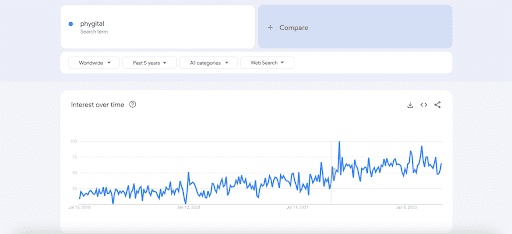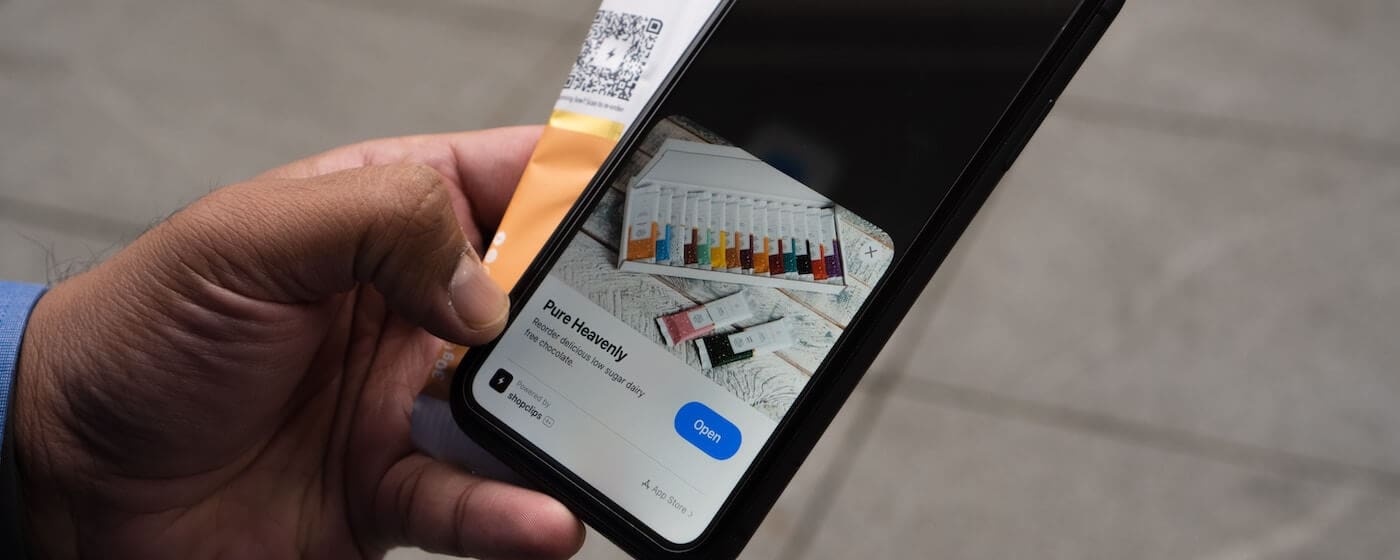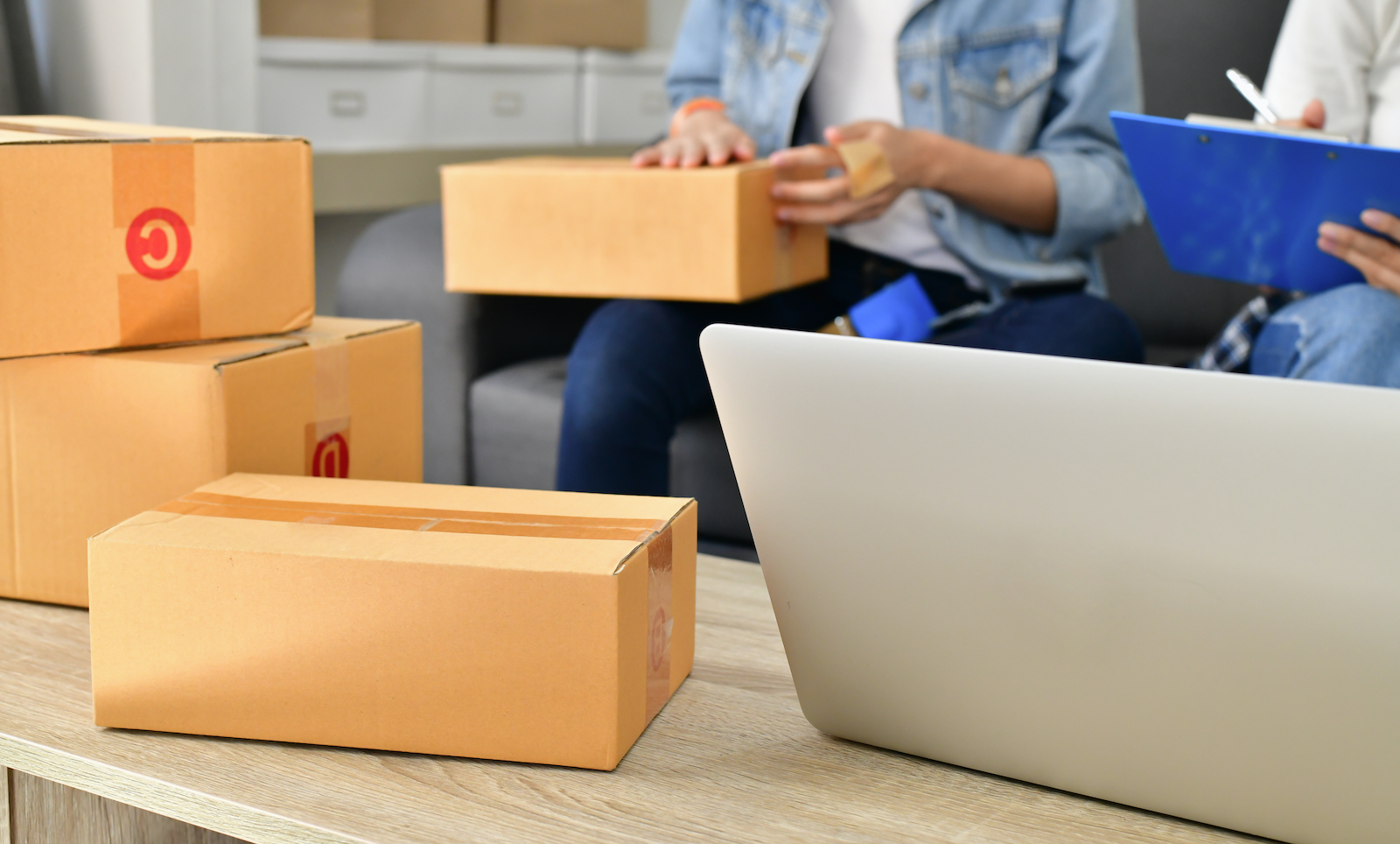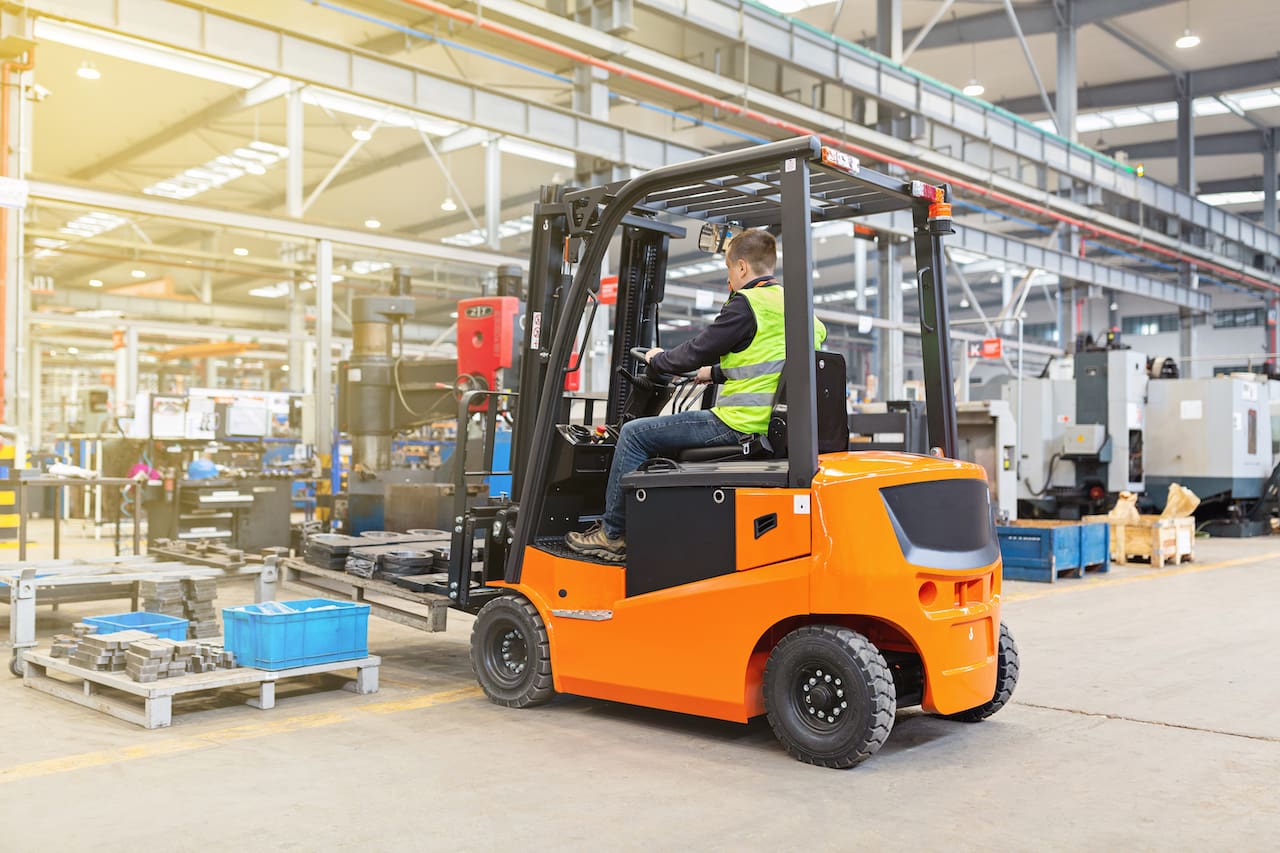Table of Contents
** Minutes
How does phygital retail work?
6 phygital retail strategies for success
The benefits of adopting phygital retail
Common phygital retail challenges
The retail space isn’t what it used to be.
More and more consumers are choosing to make their purchases online instead of going in-store. But does that mean it’s the end for retail?
Not necessarily. This is where “phygital” retail comes in.
Phygital retail is the blending between online and offline storefronts to provide your customers with an immersive, personalised experience.
Think AR/VR, digital kiosks, self-checkouts, or click-and-collect. These are all ways of using digital tools to enhance the physical shopping experience.
As a brand owner, you might be thinking “Oh, so I need to have my own brick-and-mortar store to implement a phygital retail strategy?” Not necessarily.
You can set up a pop-up shop or leverage the space and technology of retail partners. This is what Hero Cosmetics did, getting into major retailers like Target, Anthropologie, Neimann Marcus, and more.
In this guide, we’ll go through everything you need to know about the phygital retail space and how to implement a phygital strategy to maximise your brand’s potential in this evolving retail environment.
What is phygital retail?
“Phygital” is a term that combines the words “physical” and “digital.” So, when we talk about “phygital retail,” we’re talking about a retail experience that merges the best of both online and offline worlds to create a unique, integrated, and seamless shopping experience.
Click-and-collect, for example, is a form of phygital retail that increased 554% year-over-year in 2020 during the COVID-19 pandemic. But that’s not all, phygital retail can also be incorporated through:
- Augmented reality (AR) and virtual reality (VR)
- In-store digital kiosks
- Mobile apps
- QR codes
- Internet of Things (IoT)
- Social media
- Pop-up stores
Why are we talking about phygital retail?
Our physical world is becoming increasingly integrated with the digital one. It only makes sense that consumers want their shopping experience to evolve in the same way. And as seen in the graph below, the term “phygital” has been steadily increasing in search interest over time.

Consumers want flexibility.
They want to be able to do some of the “in-store” things online and vice-versa. According to BigCommerce, 35% of people say that they would be shopping online more if they could virtually try on a product before buying it.
Moreover, a study of 1,200 people found that Gen Z shoppers (whose buying power is steadily increasing) were most likely to research a product online and buy it in-store.
There are pros and cons to both brick-and-mortar stores and ecommerce, and it seems like consumers are increasingly looking for a blend of both.
But phygital retail isn’t for everyone. It requires a strategic logistics operations to handle the complexities of managing inventory across channels.
But for many brands, phygital retail is the way of the future.
Take Warby Parker for example. They’ve integrated a virtual try-on feature into their mobile app. This feature allows customers to see how different frames look on their faces without ever needing to visit a physical retail store.
With over 2.5k ratings and 4.7 stars on the app store, customers are loving it. Customers can try on frames anytime and anywhere, without any pressure to make immediate decisions.
How does phygital retail work?
As mentioned earlier, phygital retail works by bringing the online and offline worlds together. To help better portray this concept let’s look at a few examples:
Amazon fresh
Amazon Fresh is a great example of the phygital retail experience. This innovative concept merges the ease and convenience of online shopping with the traditional in-store experience.
Customers use the Amazon app on their smartphones to enter the store. As they move through the store and pick up items, sensors automatically scan and add these items to their digital cart in the app.
If a customer changes their mind and returns an item to the shelf, it’s removed from their digital cart. When they’ve finished shopping, they simply leave the store, and Amazon charges their account for the items in their digital cart, sending them a receipt.
No more waiting in line, scanning items individually, or digging for change and fumbling with cards. Amazon Fresh’s model takes care of everything, providing customers with a convenient shopping experience that leverages both physical and digital aspects.
Nike by melrose
Nike’s concept store in Melrose, LA is another innovative application of phygital retail. This store is designed around the specific needs and shopping habits of local customers, using data gathered from online purchases and app usage in the area.
The store offers a range of services, including online reservation of products for in-store trials, instant purchases via the app, and personal shopping assistance.
Furthermore, the merchandise in the store is frequently updated based on online purchasing trends in the area, ensuring that the products on display are those most relevant to the local community.
Sephora’s virtual artist app
Sephora’s Virtual Artist App is a great example of phygital retail in the beauty industry. It allows customers to try on different makeup products virtually using augmented reality.
Once the customer selects a product, they can see how it looks on their own face using their smartphone camera.
If they like the product, they can add it to their cart and either choose home delivery or pick it up at a nearby store.
6 phygital retail strategies for success
There are multiple ways to implement a phygital retail strategy. And you don’t have to stick to just one.
Many businesses adopting the phygital retail model use a combination of strategies to leverage the best of both physical and digital retail experiences.
Here are six phygital retail strategies.
1. Create a seamless omnichannel experience
To be successful in phygital retail, businesses must create an omnichannel retail experience that integrates their physical and digital touchpoints with a smooth transition from online to in-store, or vice versa.
For example, a customer might browse products online, then try and purchase them in-store, or vice versa. Their online and in-store preferences, purchases, and browsing data should all be interconnected.
To optimise this process, some retailers may choose direct store delivery to receive their goods directly from a manufacturer instead of storing them in a warehouse. When done properly it can improve customer satisfaction, however, this comes with its own set of challenges.
2. Use data to drive personalisation
Using customer data to provide personalised shopping experiences involves product recommendations based on:
- Past purchases
- Personalised discounts
- and AI chatbots
According to Vogue Business, 16% of Gen Z shoppers want personalised offers sent to their phones when in-store. Therefore, you can use data from online interactions to personalise in-store experiences.
3. Enhance in-store experiences
Phygital retail is not just about integrating digital elements into the physical store environment, but also about enhancing the overall in-store experience. This can involve using virtual reality (VR) or augmented reality (AR) to entertain and engage customers.
For example, a furniture store might use VR to allow customers to virtually “walk through” different room layouts before they make a purchase.
Another way to enhance in-store experiences is through the use of technology to streamline and improve service, such as self-checkout kiosks or mobile payment options.
4. Invest in mobile commerce
With more and more consumers using their mobile devices to shop, businesses should invest in mobile commerce as part of their phygital strategy.
57% of consumers have used a retailer’s mobile app while in-store, according to a study by Yes Marketing.
A mobile app allows customers to easily browse products, make purchases, track their orders, and access customer service. It can also integrate with in-store systems to facilitate functions like mobile payments, digital coupons, and click-and-collect services.
5. Leverage AR and AI technology
AR and artificial intelligence (AI) are commonly used in phygital retail to provide customers with unique and personalised shopping experiences. AR can be used to enhance the online shopping experience by allowing customers to “try on” clothes for example.
AI, on the other hand, can be used to power chatbots that provide personalised product recommendations or answer online customer questions 24/7.
6. Foster a strong online community
Building a strong online community should be a top priority no matter which stage you are in your phygital retail journey.
This involves engaging with customers on social media, creating online groups where customers can share their experiences and feedback, and even hosting virtual or physical events.
By building a strong online community, businesses create a sense of belonging and loyalty among their customers, which drives repeat purchases and word-of-mouth referrals.
The benefits of adopting phygital retail
Although implementing a strong phygital retail strategy takes time (and often significant investment), there are a few major benefits.
Greater customer reach
Phygital retail allows businesses to extend their reach far beyond the limitations of a physical storefront. This integration of physical and digital enables customers to shop at their convenience from anywhere in the world, expanding a business’s customer base.
Pop-up stores are a great example of expanding customer reach and are used by online-first retailers like Glossier. Originally an online-only beauty brand, Glossier has used pop-up stores in various cities to reach more customers.
These temporary physical spaces not only allow them to test new markets but also provide a unique, immersive experience for customers who typically shop online.
Personalised shopping experience
Phygital retail strategies can leverage data from online interactions to deliver personalised in-store experiences.
Let’s imagine a scenario where a customer, John, visits a phygital retail store like Amazon Fresh. Based on John’s previous purchases and browsing habits, the store’s app can tailor product suggestions specifically for him.
For instance, if he has been buying organic, gluten-free food, the app might recommend a new organic, gluten-free bread that just hit the shelves. This customisation allows John to explore new products aligned with his preferences, improving his overall shopping experience.
Personalised communication further strengthens the bond between John and the retailer. If John usually shops on Saturdays, he might receive a reminder on Friday evening about any special weekend deals.
This type of individualized communication boosts John’s perception of the brand and cultivates a stronger customer-retailer relationship.
Increased engagement and customer loyalty
Phygital strategies often involve interactive technologies that increase customer engagement.
Nike’s House of Innovation in New York, for example, offers a phygital shopping experience that includes customising personal products, creating on-demand sneakers, and a digital check-out experience, which is all designed to engage customers on a deeper level.
This enhanced engagement builds customer loyalty in the long run, as customers are likely to return for unique experiences they can’t find elsewhere.
Seamless customer journey
In a phygital retail environment, customers can enjoy a smooth buying journey that bridges online and offline worlds. This might involve browsing products online, trying and purchasing them in-store, and then having after-sales services managed digitally.
For instance, IKEA Place, an AR app for IKEA, allows customers to visualise how furniture would look and fit in their homes before making a purchase, linking the convenience of digital shopping with the confidence of physical experience.
Access to comprehensive data
Phygital retail offers businesses a more comprehensive understanding of customer behaviors and preferences. With proper analysis, this data can help retailers better understand their customers, optimise their product mix, and offer more personalised marketing.
The British fashion retailer, ASOS, is a great example of a company using comprehensive data in a phygital retail strategy with their online tool, Fit Assistant.
This tool provides sizing recommendations based on customers’ details and previous purchase history, reducing the likelihood of returns and enhancing customer satisfaction.
Common phygital retail challenges
The retail space in general is no walk in the park. You need to consider retail distribution strategies, merchandising, inventory management, customer service, and more.
Here are some common challenges to consider.
Getting your tech right
One of the first hurdles in adopting a phygital approach is implementing the right technologies are in place. Retailers need to choose and invest in technology that not only supports the current business model but also plays nice with their ecommerce tech stack, or vice-versa.
Overcoming this challenge involves careful planning, working with trusted third parties, and phased implementation. It is crucial to start small, test, and then scale.
For instance, a retailer might start by launching an online store and gradually add features like mobile shopping, AI-powered recommendations, or AR product previews as the business grows.
Data privacy and security concerns
The phygital retail model relies heavily on the collection and analysis of customer data, raising concerns about data privacy and security
. Customers are more conscious than ever about their data rights and are likely to disengage with brands they perceive as untrustworthy.
To address this, businesses need to prioritize data security by doing things like:
- Implementing robust security measures (2FA, encryption, etc)
- Complying with data protection regulations
- Partnering with secure third-party vendors
Additionally, they must be transparent with customers about their data collection practices and provide clear, easily accessible privacy policies. Opt-in consent should be used wherever possible, giving customers control over their data.
Online and offline experience integration
Integrating online and offline experiences is at the core of phygital retail, but it can be challenging to create a seamless transition between these environments. A disjointed experience can confuse customers and harm the brand’s image.
The key to overcoming this challenge lies in understanding that both channels should complement, not compete with each other.
Two major things to get right include:
- Consistency: The same branding should be identifiable in physical store designs, on the website, and within mobile applications. Familiarity breeds comfort, allowing customers to move between online and offline platforms effortlessly.
- Inventory management: When a customer sees a product online, they should have the confidence to check its availability at their local store, reserve it, or request home delivery. This is a challenging one to get right, but with the right omnichannel fulfilment partner, it becomes much easier.
Unpredictable customer expectations
In the phygital world, customer expectations are constantly evolving and can be difficult to predict. One day, the focus might be on 2-day delivery, while the next, customers might demand more sustainable business practices.
Staying ahead of these changing expectations requires a strong customer feedback mechanism.
Customer surveys, social media listening tools, and customer interviews can provide valuable insights into what customers want. These insights can then guide the development and refinement of the phygital experience.
ShipBob + phygital retail = ecommerce mastery
The phygital retail landscape requires a partner who excels in providing solutions that can bridge the gap between the physical and digital. ShipBob is that partner.
Order fulfilment is at the heart of a successful phygital retail strategy. ShipBob simplifies the process of combining retail and ecommerce enablement with this its robust fulfilment solution.
“While we initially used ShipBob exclusively for our retail fulfilment, we quickly outsourced DTC fulfilment to them as well once we experienced how easy and effective it was.
ShipBob’s omnifulfilment solution could handle every sort of order we had, including retail, DTC, and B2B, and had no qualms whatsoever about facilitating our FBA prep orders for Amazon.
We’re currently fulfilling 100% of our orders through three of ShipBob’s fulfilment centres, as we’ve done for the last couple of years. With ShipBob, we can fulfil both DTC orders and orders for our retail partners (including Leisure Pro, Divers Direct, Swim Pro, and small surf shops in Hawaii) through a single solution.”
Nathan Garrison, Co-Founder and CEO of Sharkbanz
With a sophisticated network of fulfilment centres across the globe, ShipBob ensures speedy, accurate, and cost-effective fulfilment and other logistics services.
Maintaining optimal inventory levels is crucial for multichannel retailing. ShipBob’s real-time inventory management tools help to mitigate risks of stockouts and overstocking. The user-friendly cloud-based fulfilment technology offers valuable insights into your inventory status, making it easier to optimise inventory across channels.
Whether you’re evaluating wholesale vs retail, ecommerce, or phygital retail, ShipBob can help.
“When we onboarded with ShipBob last year, we hit the ground running with both DTC and B2B orders. In fact, we had just started with Chewy around the same time we partnered with ShipBob. Fulfilling orders quickly through our site and marketplaces is a must-have, not a nice-to-have for our business.
From the beginning, we knew that the early Chewy orders would need to go through our fulfilment partner — all of our retail distribution orders from Chewy go through ShipBob’s fulfilment centres today.
Selling on marketplaces is challenging enough, and ShipBob’s ability to service both D2C and B2B has enabled us to build more consistent procedures and practices across our different sales channels.
Stephanie Lee, COO at PetLab
Phygital retail FAQs
Below are answers to common questions about phygital retail.
How does ShipBob fit into the phygital retail landscape?
ShipBob is an omnichannel fulfilment solutions provider. ShipBob can take care of fulfilling orders and shipping to customers. ShipBob also offers B2B ecommerce servics to establish a multi-channel retail experience. This makes it easier for businesses to create a phygital retail landscape and still be able to manage and optimise inventory levels.
What are some innovative technologies driving phygital retail today?
Technologies like artificial intelligence, augmented reality, internet of things, and big data analytics are driving the phygital retail. These technologies enable personalised customer service, immersive shopping experiences, seamless integration of physical and online retail, improved supply chain transparency, and insightful customer behaviour predictions.
What does the future hold for phygital retail?
Although no one can predict the future, the interconnectivity between our physical and digital worlds doesn’t seem to be slowing down. Therefore, it only makes sense that more customers will expect retailers to adopt a phygital retail approach. From a retailer’s perspective, being able to offer a more personalised experience will undoubtedly become a competitive advantage.



